What’s The Difference Between Bloomy and Washed Rind Cheeses?
Bloomy and washed-rind cheeses are two distinct types of cheese characterized by different production methods and flavor profiles:
Bloomy Cheese
Production Method: Bloomy cheeses are typically made from cow’s milk and have a soft, creamy interior with a white, bloomy rind. The rind is formed by the growth of a mold called Penicillium candidum or Geotrichum candidum. This mold gives the cheese its characteristic velvety, white appearance.
Flavor and Texture: The interior of bloomy cheeses is soft, gooey, and creamy. The flavor is often mild, with a balance of creamy, buttery, and sometimes mushroom-like notes. Common examples include Brie and Camembert.
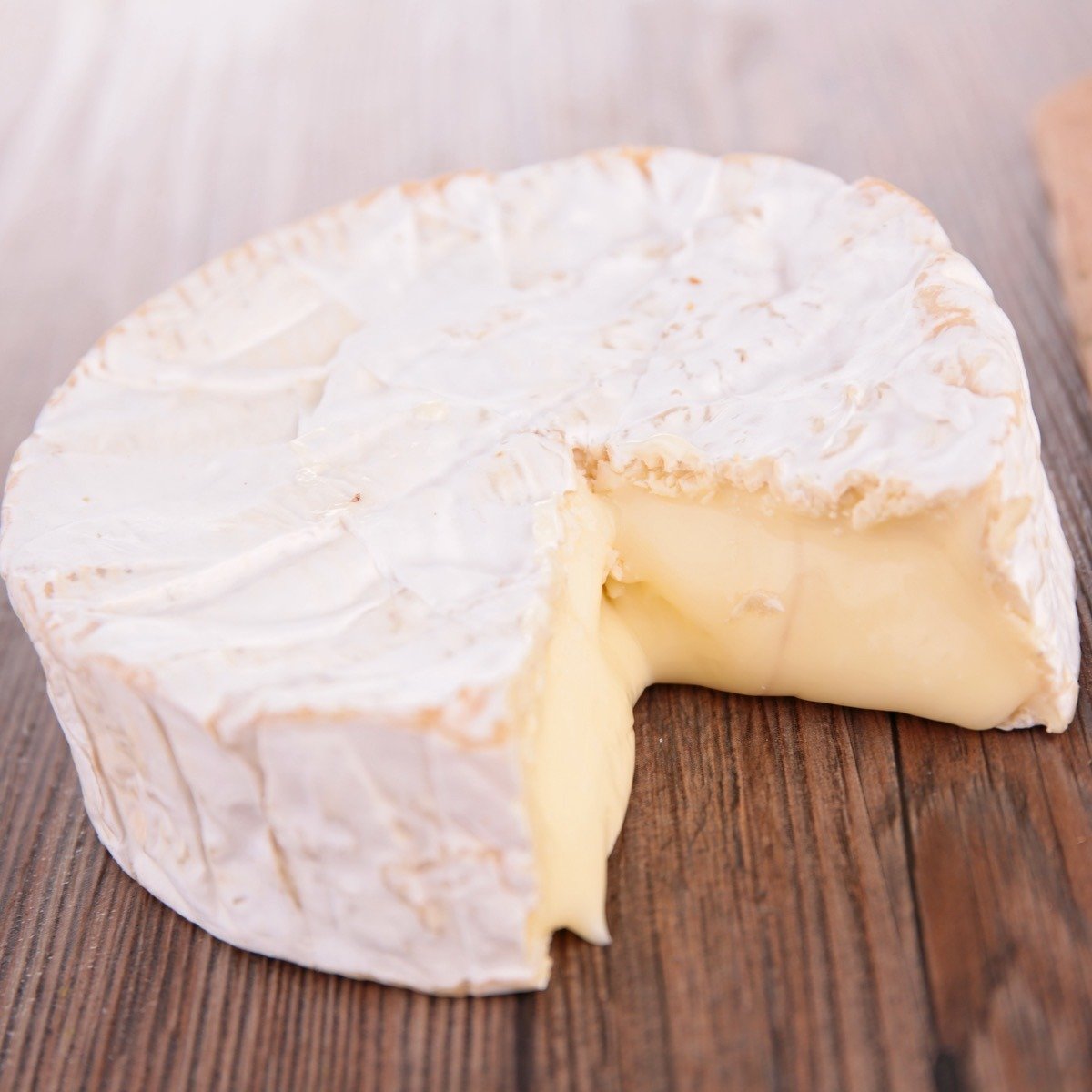
Washed-Rind Cheese
Production Method: Washed-rind cheeses are often made from cow’s milk as well, but the distinguishing feature is the regular washing of the cheese’s surface with a liquid, such as brine or alcohol. This washing encourages the growth of specific bacteria, Brevibacterium linens, which gives the cheese its characteristic orange or reddish rind.
Flavor and Texture: Washed-rind cheeses tend to have a strong, pungent aroma and a more assertive flavor than bloomy cheeses. The interior can vary from semi-soft to firm, and the flavor profile may include savory, meaty, and sometimes fruity or nutty notes. Examples include Epoisses and Taleggio.
While both bloomy and washed-rind cheeses share a soft texture, their respective production methods differ regarding the rind development and the flavors imparted. Bloomy cheeses have a soft, white, mold-ripened rind and a mild, creamy flavor, while washed-rind cheeses have a washed, often orange or reddish, rind with a more assertive and complex flavor profile.
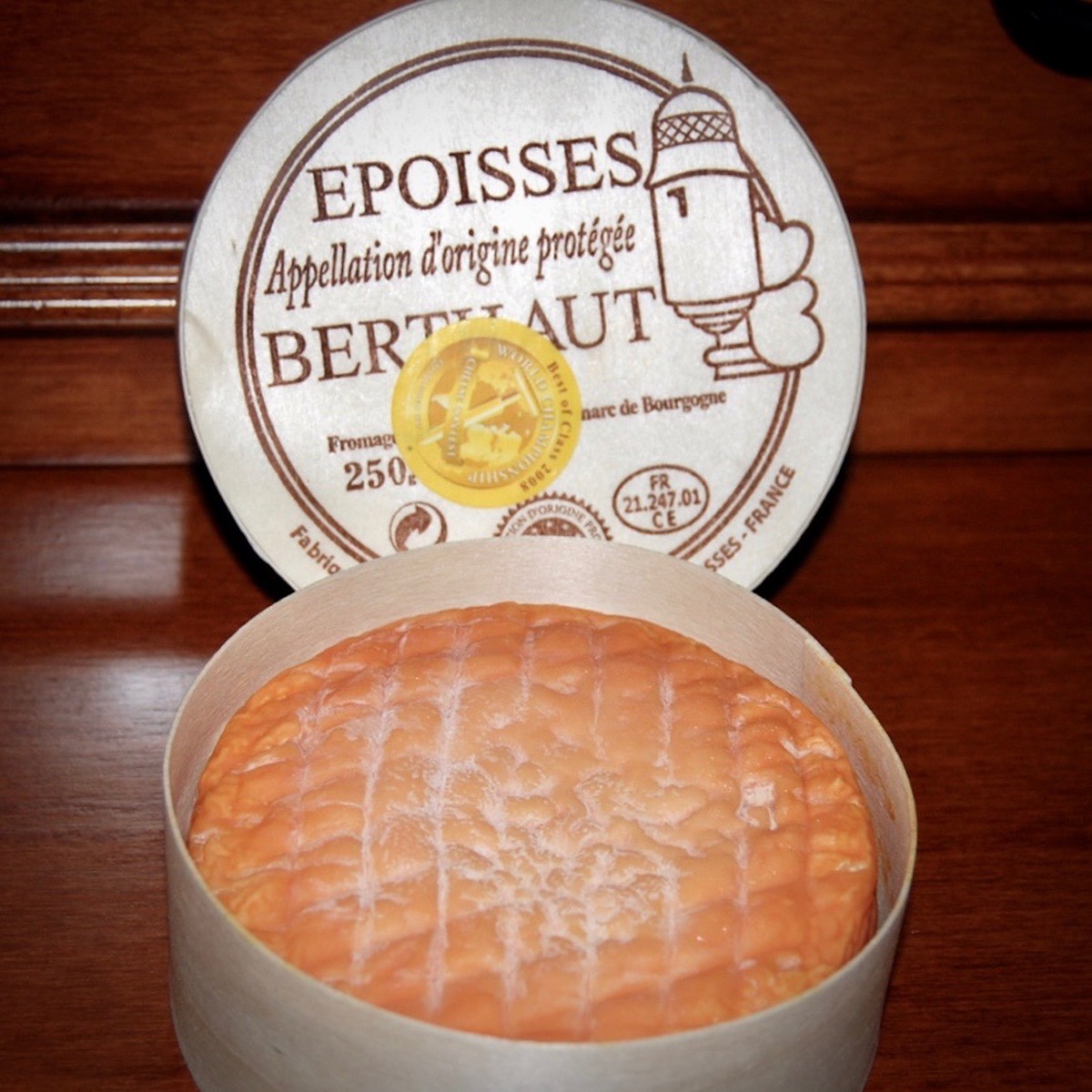
Taste
The taste differences between bloomy cheese and washed-rind cheese are quite distinct due to variations in their production methods, ripening processes, and the microorganisms involved. Here’s a general overview:
Bloomy Cheese Taste
Flavor Profile: Bloomy cheeses typically have a mild and delicate flavor profile. The creamy interior is characterized by notes of butter, cream, and sometimes a subtle earthiness. The white, bloomy rind contributes a slight tanginess.
Aroma: The aroma of bloomy cheeses is often mild, with hints of mushroom or fresh cream.
Washed-Rind Cheese Taste
Flavor Profile: Washed-rind cheeses are known for their more assertive and complex flavors. The washing process, which encourages the growth of Brevibacterium linens, imparts a pungent, savory, and sometimes meaty character. The cheese’s interior may have a more robust taste with hints of saltiness and nuttiness.
Aroma: Washed-rind cheeses are renowned for their strong aromas. The rind, influenced by the Brevibacterium linens, can give off strong odors reminiscent of earth, barnyard, or even ammonia.
Bloomy cheeses tend to be milder, creamier, and have a more subdued aroma, while washed-rind cheeses are characterized by stronger, more complex flavors and distinctive, often pungent aromas. The choice between the two depends on individual taste preferences, as some may enjoy the delicate nature of bloomy cheeses, while others appreciate the bold and robust flavors of washed-rind varieties.
What About the Price?
The price of cheese can vary based on several factors, including the type of cheese, its production process, aging time, milk source, and the cheese producer’s reputation. Both bloomy cheeses and washed-rind cheeses can span a wide range of prices, and it’s challenging to make generalizations. However, there are some factors that might influence the pricing of these cheeses:
Production Complexity: The production of certain types of cheese, especially artisanal or traditionally crafted varieties, may involve more intricate processes. This can include handcrafting, longer aging periods, or specialized techniques. Such factors can contribute to a higher cost and, consequently, a higher retail price.
Quality of Ingredients: The milk quality used in cheese production can significantly impact the final product. Cheeses made from high-quality, locally sourced, or organic milk may command a higher price.
Artisan vs. Mass Production: Cheeses produced by smaller artisanal producers, often with limited quantities and attention to detail, may have higher prices compared to mass-produced counterparts. Artisanal cheeses often focus on quality, uniqueness, and traditional methods.
Aging Time: Cheeses that require longer aging periods may be more expensive due to the costs associated with storage, monitoring, and the opportunity cost of tying up resources for an extended period.
Brand and Reputation: Cheeses from well-known or prestigious producers or regions may have higher price points, as consumers may be willing to pay a premium for the reputation and quality of those brands.
It’s essential to consider these factors on a case-by-case basis. Specialty or rare cheeses within either the bloomy or washed-rind category may also be more expensive than more common varieties. Additionally, local market conditions and import/export factors can influence the price of cheeses.
When To Eat Them
Some cheeses improve with age, yet tread carefully with a bloomy rind—you don’t want it to acquire too much moisture and become watery over time. As a general rule of thumb, I typically attempt to eat as much of my bloomy cheese as possible after I cut into it on the first serving.
You can be slightly more flexible with a washed rind cheese, rewrap it, and put it back in the fridge after one serving. Remember that these cheeses can get very smelly; the longer you let them sit, the stronger the aroma. For the record, I love stinky cheeses.
Examples of Bloomy Rind Cheeses
- Brie: A classic French cheese with a soft, creamy interior and a white, bloomy rind. It has a mild and buttery flavor.
- Brillat-Savarin: This triple-cream cheese from France is known for its creamy texture and mild, sweet flavor.
- Camembert: Like Brie, Camembert is a French cheese known for its creamy texture and earthy, mushroom-like flavors.
- Chaource: A French cow’s milk cheese with a creamy texture and a bloomy rind. It has a mild, tangy flavor.
- Coulommiers: Often called “mini Brie,” Coulommiers is a French cheese with a creamy interior and a bloomy rind.
- Delice de Bourgogne: Another French cheese, Delice de Bourgogne is a triple-cream cheese with a luscious texture and a tangy, buttery taste.
- Explorateur: A triple-cream French cheese that is rich and buttery with a bloomy rind. It has a luxurious texture.
- Le Tur
- Robiola: An Italian cheese that may come in various regional varieties, Robiola is a soft, tangy cheese with a bloomy rind.
- Saint André: A triple-cream cheese from France, Saint André is rich, decadent, and velvety with a bloomy rind.
These bloomy cheeses vary in flavor, texture, and origin, providing a range of options for those who enjoy this cheese category.
Examples of Washed Rind Cheeses
- Epoisses: A pungent and flavorful French cow’s milk cheese with a distinctive orange-red washed rind. It has a strong aroma and a creamy interior.
- Liverarot: Also known as “The Colonel” due to its five layers, Livarot is a French cheese with a washed rind, strong aroma, and a complex, spicy flavor.
- Pont l’Eveque: A French cow’s milk cheese with a washed rind, Pont-l’Évêque has a smooth texture and a mild, nutty flavor.
- Taleggio (Best Buy for the $) While also mentioned in the bloomy cheese list, Taleggio is a versatile Italian cheese that can have both bloomy and washed-rind variations. The washed-rind Taleggio is known for its strong aroma and bold flavor.
- Raclette
- Colorouge
- Gruyère de Comté: While Comté is typically known as a firm Alpine cheese, some varieties have a washed rind. These can have a more assertive flavor than younger, milder Comtés.
- Raclette: Originating from Switzerland and France, Raclette is a semi-firm cow’s milk cheese often melted and scraped over potatoes. It can have a washed rind and a nutty flavor.
- Red Hawk: A triple-cream cow’s milk cheese from California with a washed rind. It has a rich and tangy flavor.
- Langres: A French cow’s milk cheese with a washed rind that forms a crater at the top. It has a creamy texture and a bold, earthy flavor.
- Limburger: A German cow’s milk cheese known for its strong aroma and distinctive flavor. It has a reddish-brown washed rind.
- Munster: A French or Alsatian cheese with a strong smell and a semi-soft interior. It has a reddish-orange washed rind and a robust flavor.
These washed-rind cheeses offer a variety of tastes and textures, ranging from mild and creamy to strong and pungent.

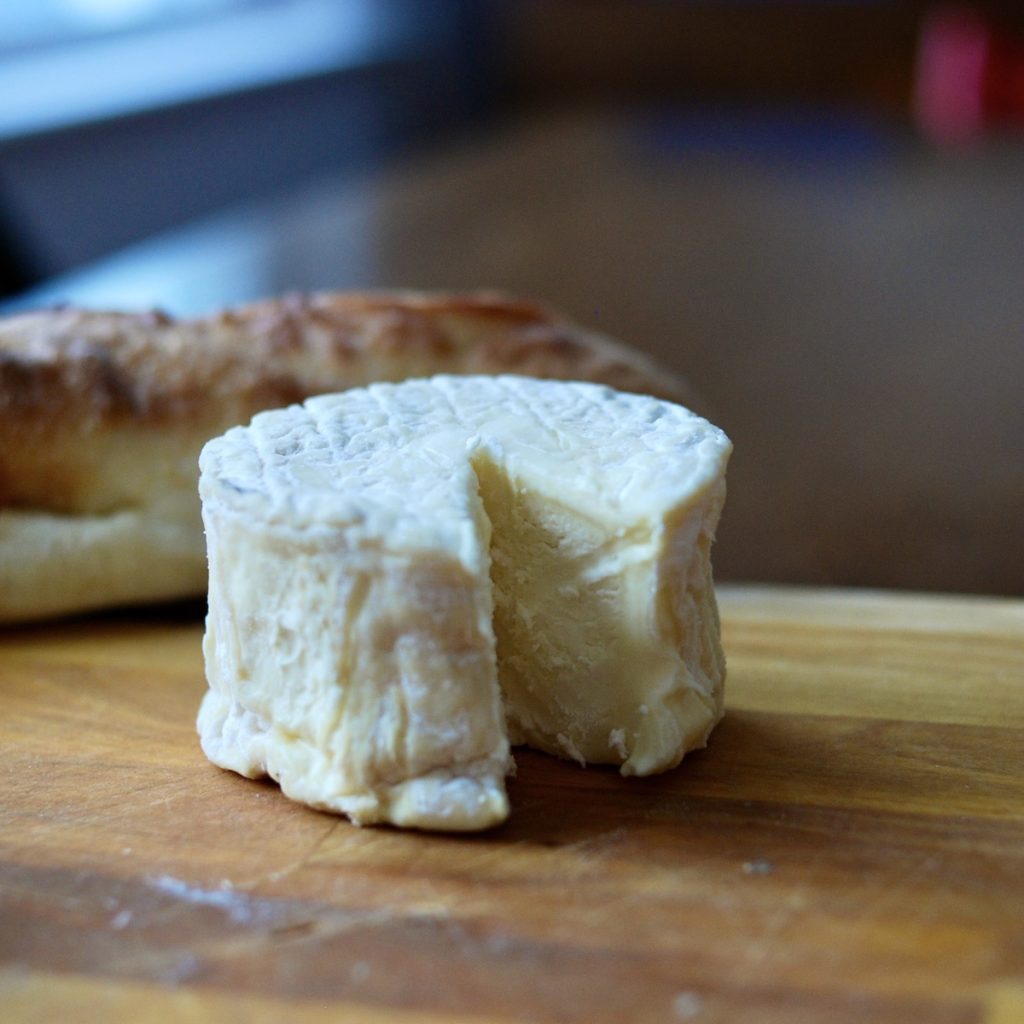

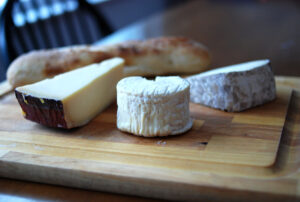
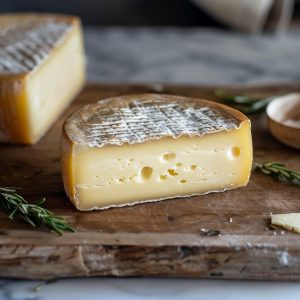
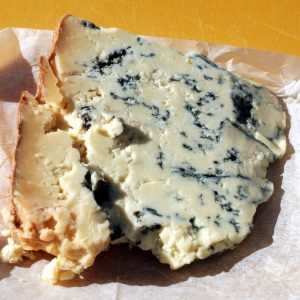
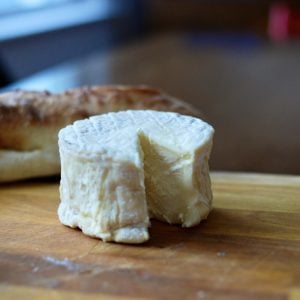
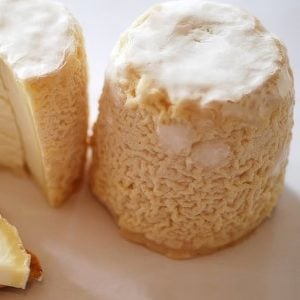
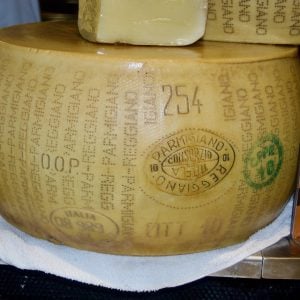



One Response
Thank you so much for this explanation! I really love Appenzeller as well as something called “Humboldt Fog.” I was wondering whether a bloomy rind was ever washed (like the Appenzeller is) and am so happy to have an answer! Thanks again!